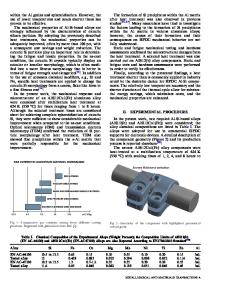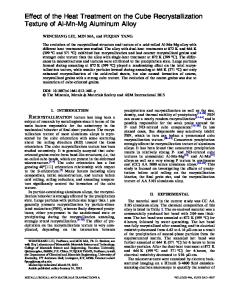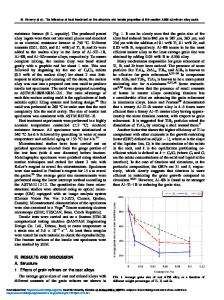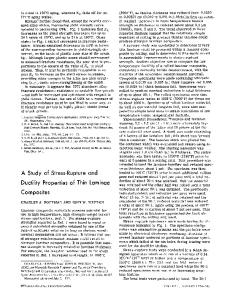Effect of heat treatment temperature on tensile strength and hardness of isostatically compacted aluminum alloy blend
- PDF / 227,855 Bytes
- 2 Pages / 612 x 792 pts (letter) Page_size
- 11 Downloads / 369 Views
lastic R T V - E rubber mold of dimensions 0.75 in. (1.90 cm) internal diam and 6.5 in: (16.5 cm) long. The g r e e n compacts, having a density of 2.47 g / c c (92 pct theoretical) and dimensions of 0.65 in. (1.65 cm) in diam and 5.5 in. (13.9 cm) in length, were f i r s t presintered at 750°F (672 K) for 15 min and then at l150°F (894 K) for 30 min in a nitrogen atmosphere (approximate dew point - 6 0 ° F or 222 K) t o an a v e r a g e density of 2.55 g / c c (95.0 pct theoretical). D u r i n g sintering, the compacts were supported on c e r a m i c r i n g s at the ends to avoid direct contact between the tube furnace wall and the p a r t . In this r e g a r d the sintering of compact differed from the previous work%4 in which the compacts were placed on magn e s i a powder t o prevent contact of the compact with the furnace wall. The parts were next furnace-cooled to room temperature p r i o r t o solution heat treating in air at various temperatures followed by quenching in cold water. The parts were subsequently aged at 320°F (433 K) for 18 h b e f o r e b e i n g machined according t o ASTM designation E-8 (0.25 in. or 0.625 cm gage diam and 1 in. or 2.5 cm gage length) for measurement of tensile strengths on an Instron machine. Hardness was measured on the F s c a l e (0.3175 cm steel ball and 60 kg m a j o r load) on a Rockwell hardness tester. More details on the measurement techniques are available in Ref. 3. Results of these measurements are summarized in Fig. 1. The strength and hardness data suggest that both properties i n c r e a s e with increasing heat treating temperature. When the a v e r a g e of strength and hardness data obtained in this work at each temperature were tested by the method of least squares, a l i n e a r relationship with a correlation coefficient of 0.98 was found between the strength and heat t r e a t ment, whereas the hardness data compared t o a second o r d e r polynomial with a correlation coefficient 0.95. When all data points were included for the least squares analysis; the correlation coefficients dec r e a s e d to 0.76 and 0.93 respectively. The lines shown in Fig. 1 correspond t o the relationships obtained from the a v e r a g e of data at each temperature. The r e a s o n for scatter in the strength data is u n c e r -
•
METALLURGICAL TRANSACTIONS A
STREHGTH (Rhf)
(1
KSI =
I000
PSI)
Data Loading...











